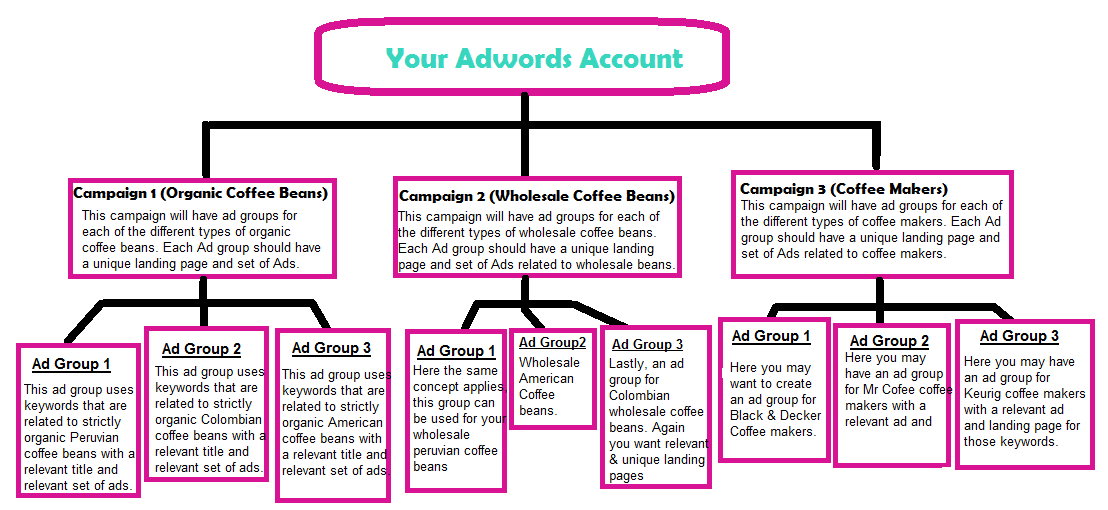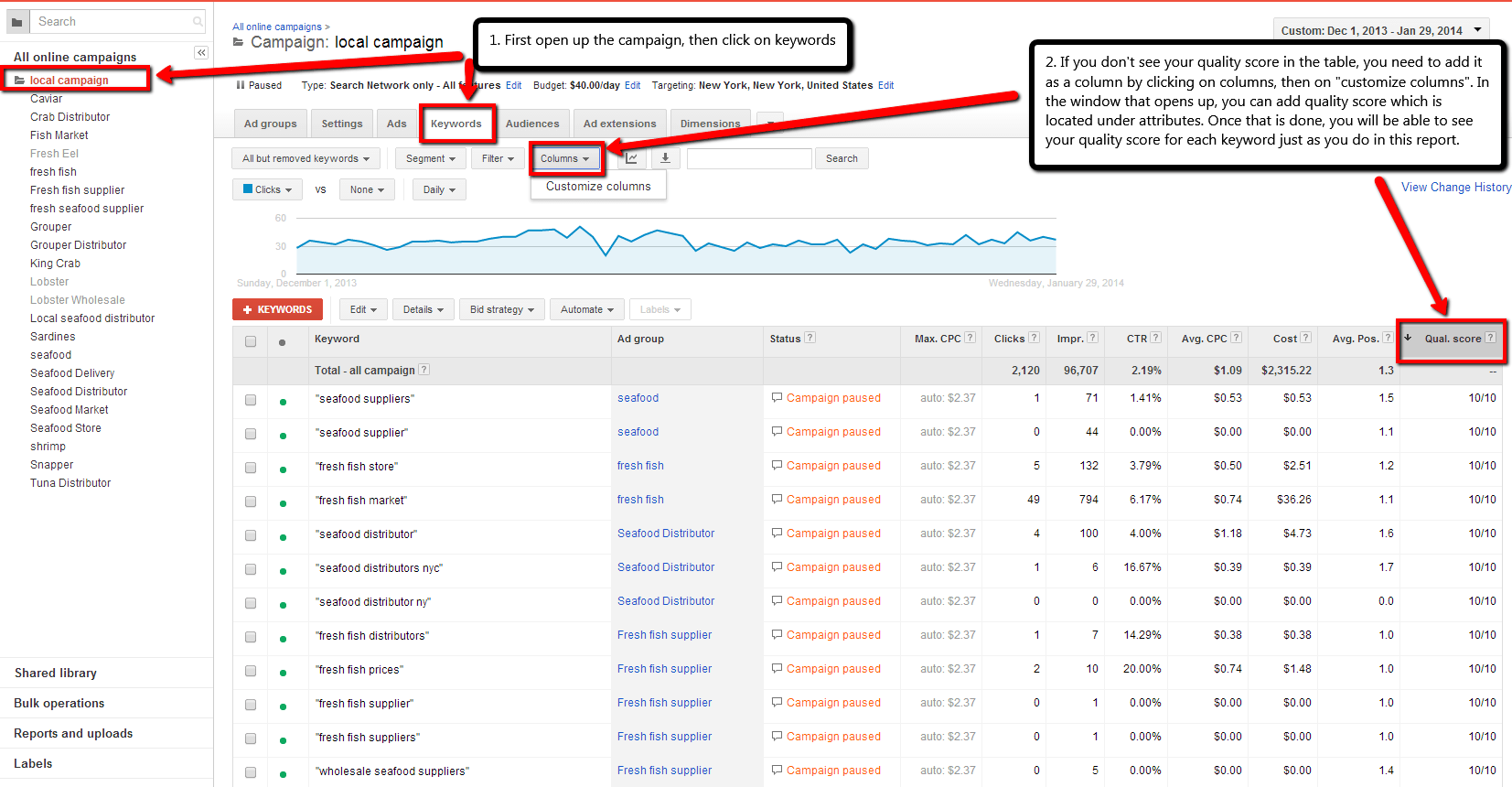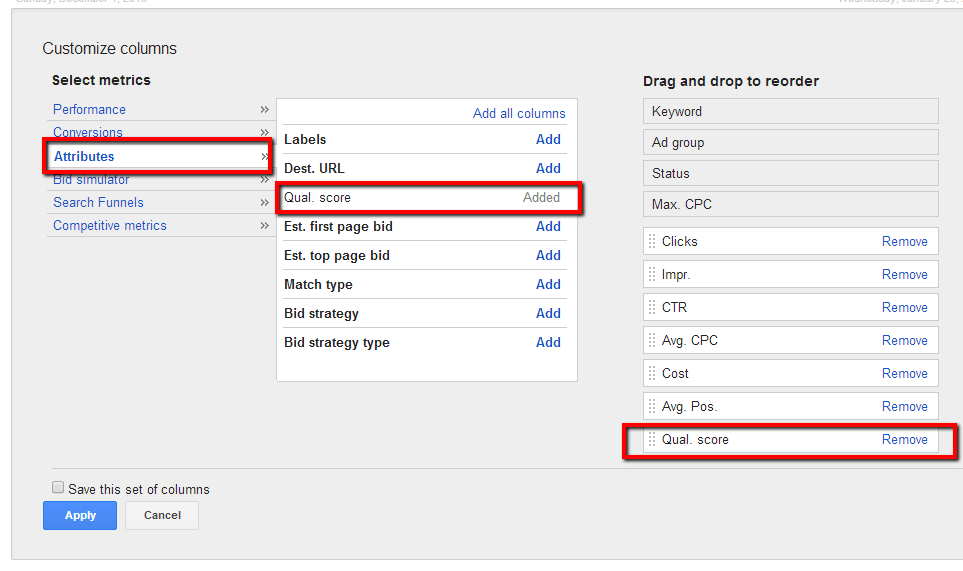Why Adwords Hasn’t Worked For You
As pessimistic as this post title may sound, it’s the truth. Most advertisers who use Adwords for the first time, end up feeling that Google Adwords is not an effective form of advertising (some even feel as if though they would have been better off flushing money down a toilet). As a owner of a PPC management company, we encounter scenarios like this on a daily basis and more often than not there is a common denominator. That common denominator is the fact that the Adwords campaign was never setup correctly from the beginning by the advertiser (or marketing company that the advertiser hired). You see unfortunately, it is NOT EASY to do pay per click marketing. That’s right, I said it, setting up a quality PPC campaign is difficult and takes a lot of time. If it were easy, EVERYONE WOULD BE DOING IT! The bottom line is that if you don’t take the time to really research the Adwords interface and best practices for PPC advertising then you can literally end up flushing thousands of dollars down the drain very quickly. Today I’d like to explain what it takes to build an Adwords campaign so that you can turn to this post if ever you want to start a new campaign and give Adwords a shot (or second shot for those that have already tried it and failed).
Now, before you proceed ANY FURTHER I need to ask you to do yourself a big favor. Watch this video that is presented on the left by the chief economist at Google, it’s very short but it explains how pay per click advertising works when you do it right. It summarizes everything I am about to explain in this post in a very easy to understand 8 minute video. Hal Varian explains how you can optimize your campaign so that you end up paying less than your competitors for each click and in some cases you can even show up higher on Google AND paying less than everyone else.
The concept is simple, if you help Google provide their users with a great search engine experience you will be rewarded by Google by paying less for each click and your ads will show up higher. The way to provide search engine users with a great search engine experience is to match up your keywords with the most relevant landing pages on your website and at the same time, formatting your ads and campaigns in a way that gives the searcher exactly what they’re looking for.
It makes sense too if you think about it, would you be upset if you searched for “Purina dog food” and you landed on a page that showed every type of dog food instead of solely Purina dog food which is what you were looking for? That is the concept in a nut shell, if you have very relevant ads that match your keywords that lead your visitors to the most relevant page on your website you will make Google and their searchers very happy.
Campaigns & Ad Group Organization is Key!
Assuming you are an established business or someone starting a new business, the first thing you are going to want to do is really think about your business and the way people would try to search for the services or products you offer. This is the keyword research (aka keyword planning) stage, one of the most critical stages in creating your Pay Per Click campaign. There are many great keyword research tools out there other that Adwords like using SEMrush for keyword research because it’s a tool that you can use to get keyword ideas from your competitors with ease. In fact, I typically will use a competitors SEMrush report to get my keyword ideas. The end goal in this part of the account creation is to organize your campaign into into groups of closely related keywords which are going to be campaigns, in the campaigns, you will have groups of keywords that are related to the campaign topic. For example if you sell coffee beans, you may consider having an ad campaign for organic coffee beans. Assuming you sell a large variety of organic coffee beans, you may want to may want to build out an entire campaign for organic coffee beans under which you would have several ad groups related to different types of organic coffee beans i.e. Colombian organic coffee beans can be one ad group and Peruvian organic coffee beans can be another. Below is an illustration of what this type of structure would look like.
So you may be wondering why you are going through the hassle of creating such granular ad groups and it’s all going to make sense now. You see when you create these really granular ad groups with relevant landing pages, ads and keywords in them you are allowing the searchers to find the most relevant answer to their search query and again, that is what Google wants. Now if you have thousands of products or many services with several service types for each section then you are probably thinking that this is going to take a long time to setup and YOU’RE RIGHT! I say this all the time to prospects to call in from our website, if search marketing was easy to do and easy to make money from… Everyone would be doing it! So in this case, it might be wise to call a professional pay per click management company like us or to hire your own in house search marketing specialist to ensure things are done correctly.
Assessing Your Campaign Strcuture
If you aren’t sure if the campaign you have is setup correctly, I wanted explain how you can assess the creation of your campaign(s) with ease. The easiest way to do this for someone who is not an Adwords expert would be to check the quality score of your keywords. If you have keywords that are not getting quality scores that are above a 7-8 on average then you are spending more than you should be on each click and it is effecting your chances of turning a profit from your online marketing budget. Here is where a company like ours would come into play, we would either optimize, or restructure your campaign so that it has a very organized campaign and ad group structure as we described with the illustration above with the coffee company example. So, the first thing you are going to want to do is log in to your Adwords account, then click on the campaign you want to analyze. Once you have the campaign open, you should click on the keywords tab so that you can see the quality score of your Adwords keywords in that campaign as shown below.
Having a Low Quality Score Means You’re Wasting Money!
If in the table you don’t see a column for “quality score” you will need to click on the “columns” button (located above the linear graph as shown in the screen shot below) to include the attribute “quality score”. Once your Adwords report contains quality score as an attribute you should have a report that is very easy to interpret. The report should show the keyword and the stats for each keyword such as the number of clicks, impressions and now that you’ve added quality score, you can see that too. With a quick glance, you should be able to see whether or now your quality scores are close to being a 10 out of 10 which is a perfect score. Something that I like to do is drill down into each ad group one at a time so that I can see the keyword quality scores for each ad group individually, to do this, simply click on the ad group which you want to analyze from the main menu on the left hand side of the screen. Assuming that your campaign needs help, the next step would be to give us a call so that we can help you turn this negative outlook on Adwords around. The truth of the matter is that Google Adwords doesnt’ make 60 billion a year in revenue from a marketing product that doesn’t work. If you have a campaign that is not setup this way, my best advice to you is to pause the campaign right away and call one of our consultants to walk you through what they would have done differently free of charge. 🙂












